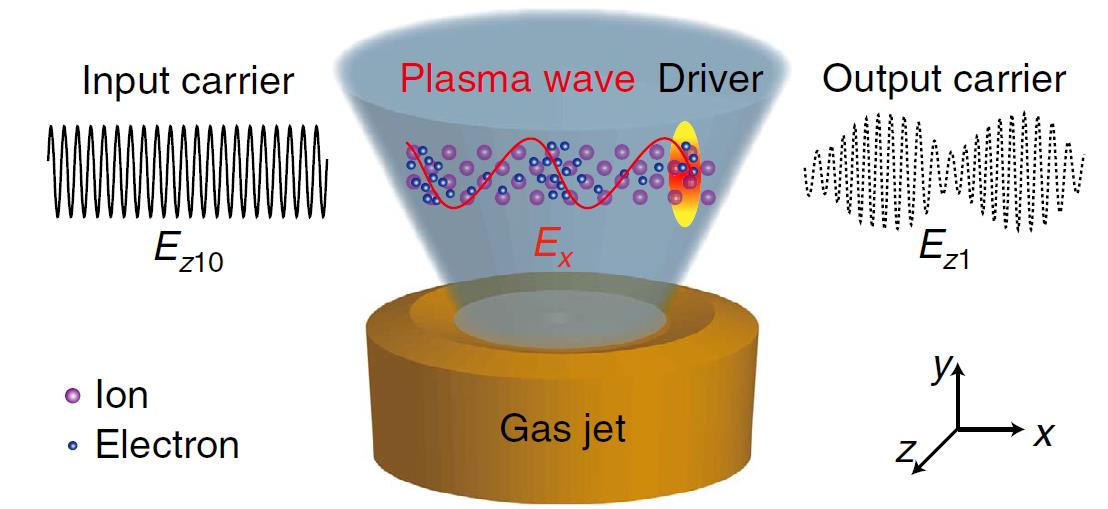Plasma optical modulators for intense lasers
Zheng-Ming Sheng and Dino Jaroszynski
One may control the laser-matter interactions, to a large extent, by properly manipulating the spatio-temporal profile of a laser pulse. When the laser pulse intensity becomes very high, exceeding 1015 W/cm2, the manipulation of spatio-temporal profiles becomes challenging because standard optical components break down at high laser intensities. However, plasma is a unique medium that can be used to manipulate high power laser beams. Novel plasma-based optical components have been proposed and even applied for this purpose, such as plasma mirrors, plasma lens, plasma gratings, and plasma channels, etc. But these usually cannot change the laser spectrum profile significantly. Recently, Zheng-Ming Sheng and Dino Jaroszynski, together with collaborators in Shanghai Jiao Tong University in China and UCLA in USA, have proposed the idea of a plasma optical modulator for intense lasers, that not only can change the temporal profiles of intense laser pulses but also produce extremely broad spectral bandwidths, even exceeding of the central frequency. This concept relies on two co-propagating laser pulses propagating in a sub-millimeter scale underdense plasma, where a drive laser pulse first excites an electron plasma wave in its wake while a following carrier laser pulse is modulated by this plasma wave. Such modulated intense lasers may find applications in driving high power terahertz radiations and brilliant X-ray source from laser-matter interactions. The research has recently been reported in Nature Communications.
June 2016